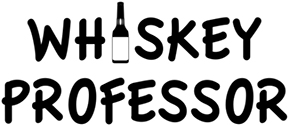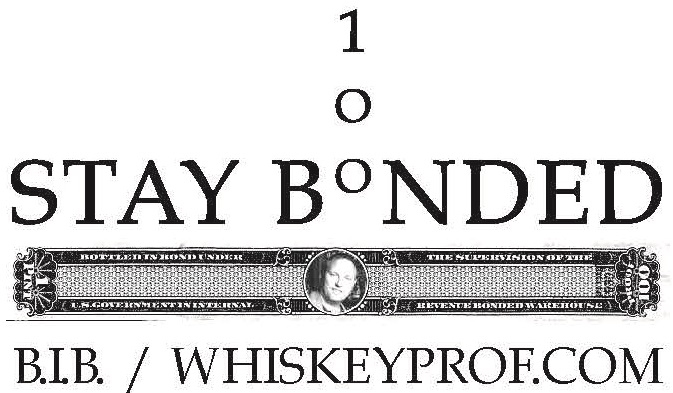What’s The Difference Between Whisk(e)y & Bourbon?
What’s The Difference between Whisk(e)y and Bourbon?
It’s still the most asked question I get traveling around the country. And now after my trip to Europe this past summer, it was a biggie there too! So what IS the difference between Whiskey and Bourbon, and what’s the deal with the (e) in Whisk(e)y?
First, the spelling. Whiskey is more of the Irish influence, and Whisky the Scottish. There is no hard and fast rules on who can use either spelling. It’s totally up to the distillery, owner, or brand team. If a bourbon uses one or the other, it means nothing either way. What I found that was very interesting is that in the TTB Standards of Identity for Distilled Spirits, bourbon, rye, and all whisky is spelled without an (e). so here we go:
Whisky – can be distilled anywhere in the world, and distilled up to any proof (190 is the max, and pretty much as high as you can distill anything). Up to this point, it sort of describes vodka, so to distinguish whisky from other spirits, whisky must be aged in oak. It must also look, smell, and taste like whisky, and to do so you can add caramel coloring, and flavors. Whisky must be bottled at no less than 80 proof.
The next restricted whisky I’d say is Canadian Whisky. Also made from a variety of grains, but it must be mashed, distilled, and aged in Canada. It must be aged in “small wood” (defined at less than 700 liters), bottled at no less than 80 proof, and caramel coloring and flavourings may be added.
Irish Whiskey must be distilled and aged on the island of Ireland at less than 94.8% and then aged in wooden casks for at least 3 years. If the spirits are from a blend of 2 or more distillates, the product is referred to as a “blended Irish Whiskey”. Caramel colouring may be added.
Scotch Whisky must be produced at a distillery in Scotland from a mash distilled no more than 94.8%, matured in oak casks for at least 3 years. Nothing can be added except water and caramel colouring, and bottled at no less than 80 proof.
Single Malt Scotch – is distilled in Scotland using a pot still at one single distillery with malted barley as the only single ingredient. It must be matured in oak casks in Scotland for at least 3 years and caramel colouring may be added.
Now for American Whiskies:
Corn Whisky is distilled from a mash of at least 80% corn not exceeding 80% (160 proof). You don’t have to age corn whisky, but if you do, it must be stored at no more than 125 proof in used or uncharred new oak containers.
Bourbon whisky, rye whisky, wheat whisky, and rye malt whisky all share a definition other than the majority grain (at least 51%) must be corn for bourbon, rye for rye, wheat for wheat and rye malt for rye malt. They must be distilled to less than 160 proof and stored at no more than 125 proof but they must be aged in charred new oak containers (all other whiskies just say wooden casks or oak casks). You can make rye, wheat, rye malt whisky anywhere in the world, but to be called bourbon, it must be made in the United States (yes that means Hawaii too).
There is no definition of “Tennessee Whisky” in the Federal standards so the standards of “whisky” apply to them. They have a Tennessee state law that defines it and there’s currently a lawsuit between those distillers of what the final definition is. Understandably the U.S. Government doesn’t want to open that Pandora’s Box and have to define 50 separate types of whiskies depending on that individual state, so just the laws of “whisky” applies here.
If you want to make any of these whiskies “Straight” then they must be aged for a minimum of 2 years in the types of barrels described in their definitions (used for corn, new charred for bourbon, rye, wheat, and rye malt) and nothing but water can be added to get it to barreling or bottling strength.
As you can see, American Straight Whiskies have the most restrictions of any whiskies in the world. If you wish to make any of these whiskies “bonded” or “bottled in bond” then it gets even more restricted.
Bottled In Bond must be composed of the same kind of spirits produced from the same class of materials. So you can’t mingle corn whisky with bourbon whisky for example. It must be produced in the same distilling season by the same distiller at the same distillery and the real name of the distillery must be listed as well as their Distilled Spirits Premises number (or DSP) must be displayed as well as the plant it was bottled. (example DSP KY-1 is the Heaven Hill Distillery Distilled Spirits Premises Number and DSP KY-31 is their bottling facility). The whiskey must be stored for at least 4 years in types of containers defined by their category, and reduced in proof by the addition of pure water to exactly 100 proof.
So as you can see, American bourbon, rye, wheat, rye malt whiskies are the most restricted whiskies in the world, and Bottled in Bond Straight Whiskies are the most restricted of the most restricted whiskies in the world!
Say that again to yourself out loud. “Bottled in Bond whiskies are the most restricted, of the most restricted whiskies in the world”. That is why I personally strive to own and enjoy every last one of them I can get my hands and lips on, and spread the word on Bottled in Bond. (see more articles on WhiskeyProf.com on Bonded/Bottled In Bond)
And now too you should be confident that you know the difference too between whiskey, and bourbon.


Howdy!
While it isn’t written in law, traditionally, Canadian whiskies distill their grains separately and then blended before or after aging, depending on the label.